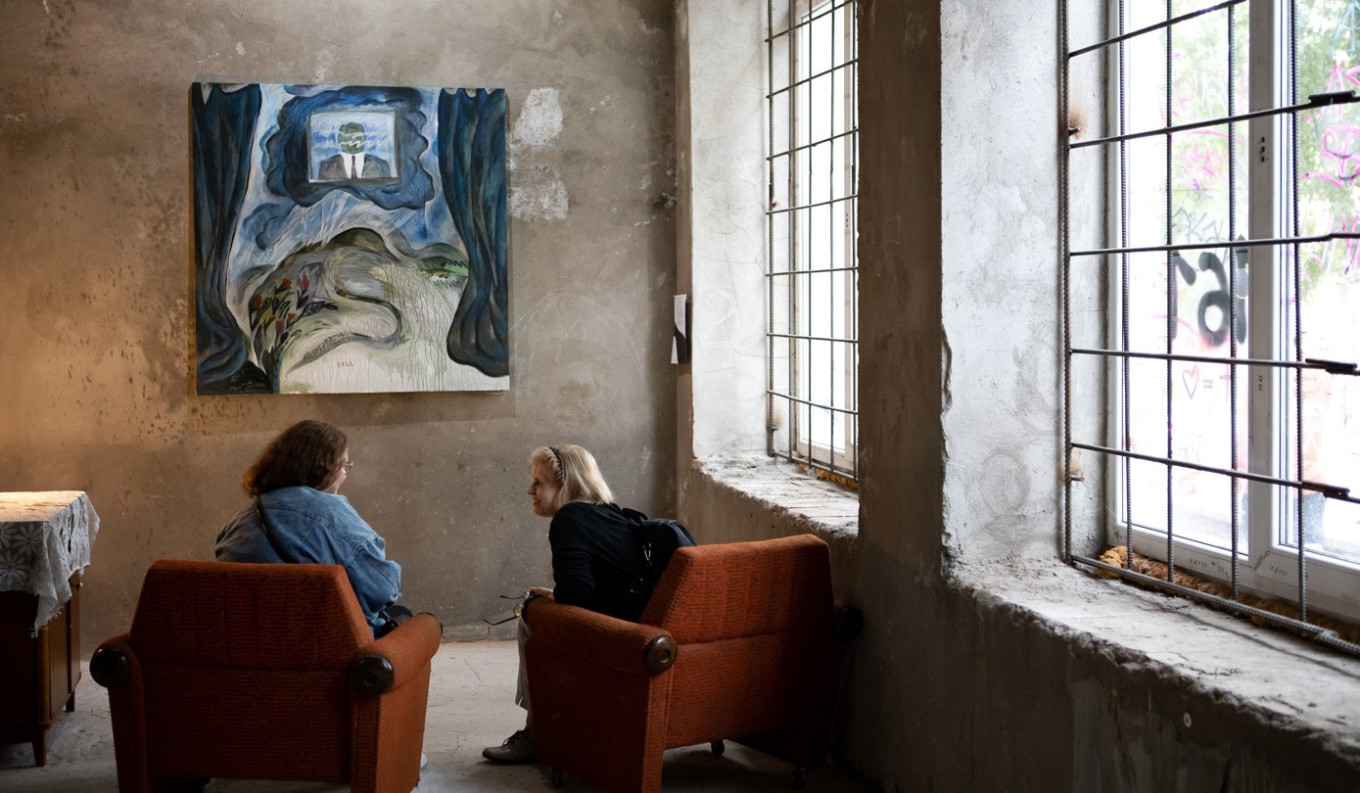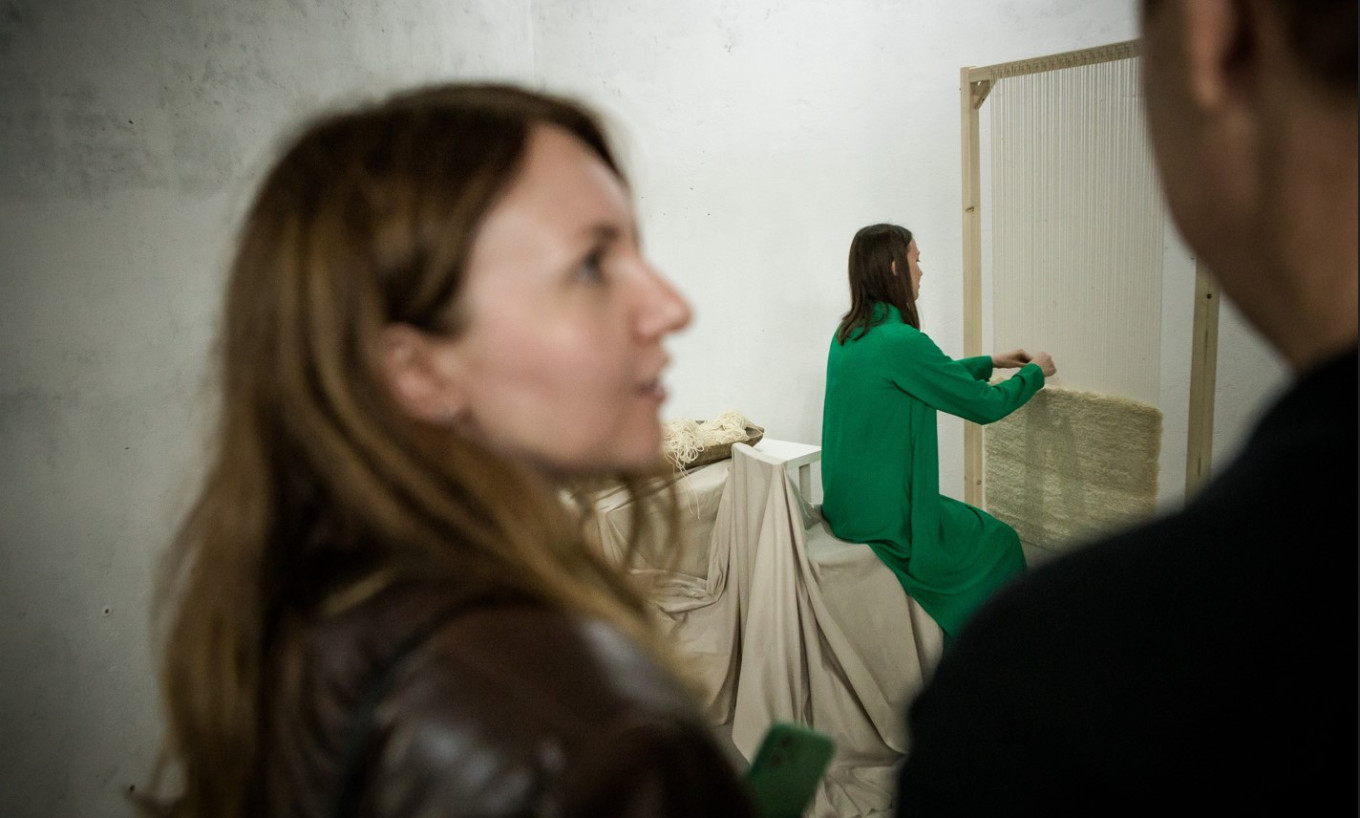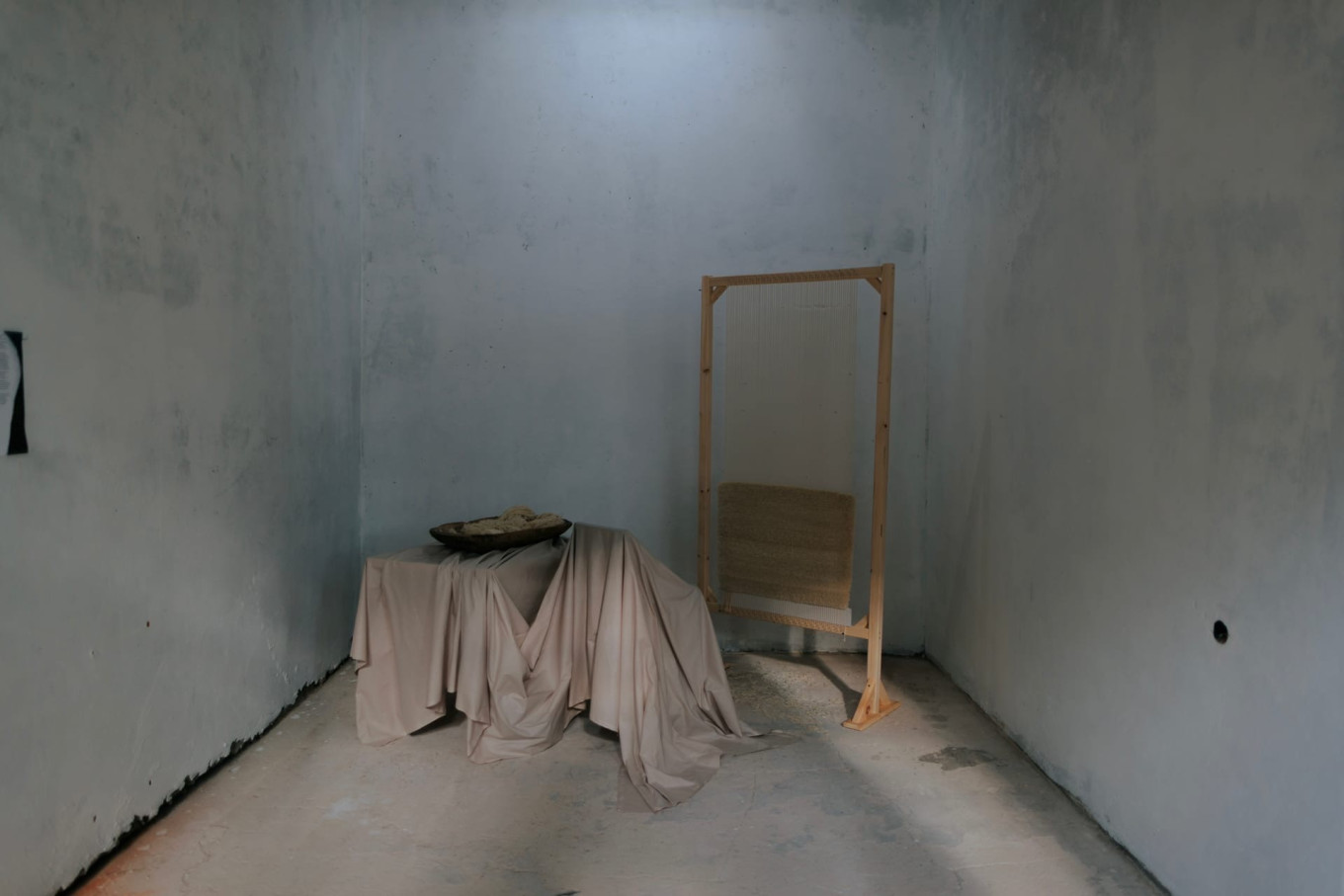Carefully threading a path through state-enforced censorship, an art exhibition called (In a Whisper) in Ufa, the capital of Russia’s republic of Bashkortostan, presents an artistic exploration of life in the country following the start of the invasion of Ukraine in February.
“Speaking very carefully, this exhibition invites us to explore the situation that we did not choose, but in which we found ourselves,” the description of the exhibit reads, carefully avoiding the word “war” that is effectively outlawed in Russia.
Organized by the local independent ZAMAN museum of modern art, the exhibit showcases the works of 17 artists hailing from Russia’s Volga-Ural area. The artists work in a broad range of artistic media — from paintings to sculpture to digital installation — and chose to speak of their experiences at varying volumes.
The works are displayed in a run-down, semi-industrial space in downtown Ufa. In an unintentionally symbolic fashion, the windows of the building are protected by prison-like metal bars, and the headquarters of Russia’s National Guard (Rosgvardia) is located just across the street.

This setting provides a fitting and familiar backdrop for the works of street artist Dmitriy Korotayev who usually displays his art on the streets of Izhevsk, the capital of the republic of Udmurtia in the western part of Russia.
Korotayev’s project, “Time to Go Home,” consists of a series of war-associated phrases printed on pieces of wallpaper that seem to have been torn off the wall of an ordinary Russian apartment — the space where people can still feel safe and express themselves freely.
“This is a reaction to the military operation, censorship and repressions in Russia from the perspective of wallpaper,” Korotayev told The Moscow Times.
The project’s title work was first displayed by Korotayev at a tram stop located near the Izhevsk Electromechanical Plant that manufactures an array of military equipment for the Russian army. A seemingly innocent invitation for the tired workers to return home, Korotayev treated it as a “personal anti-war statement,” a wish for “Russian soldiers to leave the foreign state” and “people who had to run away from the war to return to their home.”
“I am a street artist, and it was important for me to make a statement about what is going on right there on the streets,” said Korotayev.

While “It’s Time to Go Home” is a loud artistic expression of Korotayev’s opposition to Russia’s war in Ukraine, it is not the most “straightforward” or provocative piece of his works.
Korotayev doesn’t shy away from calling the war by its name and has produced multiple works featuring the word since the war began on Feb. 24. Unlike other Russian citizens, he has not yet faced any repercussions for violating censorship rules.
“I think what saves me is that I am — for now — an artist unknown to the public. That’s why I still have the opportunity to speak honestly,” he explained.
Unlike Korotayev, Ufa-based artist Nelly Akchurina is more cautious. Her post-2/24 work invites people to find refuge in the centuries-long traditions of Tatar Islam.
“I see many are turning to religion in this situation. This is like when people experience turbulence on an airplane and suddenly remember all kinds of prayers,” Akchurina told The Moscow Times.

Akchurina is using the exhibition space to weave a prayer rug of pure white cotton and wool threads. She calls her installation “Only One Thing on the Tip of the Tongue.” Although the artist and the process of creation are on display to the visitors, Akchurina cautions against calling her work “a performance.”
“Weaving a rug is a very long process, and I didn’t have time to finish it after my work was accepted [by the curators],” Akchurina explained.
“We decided that the process of weaving would move to the gallery. I don’t call it a ‘performance’ because it is just an extension of my work.”
Once “Only One Thing on the Tip of the Tongue” is completed, all exhibition visitors — regardless of their religious affiliation or lack thereof — will have the opportunity to use it to pray or simply reflect on their life.
Akchurina also hopes to make use of her creation and is currently learning how to perform namaz, the Islamic prayer ritual. For that, on the advice of Islamic scholars, the walls of her corner of the exhibition space were painted white and the floor will soon be laid with wood to satisfy the canonical requirements for the prayer space.
“You know, the most interesting thing about it is that my sister — a religious Muslim who wears the veil — told me that women always read namaz in a whisper,” said Akchurina.
For more information about this exhibition and the gallery, see the site here.






